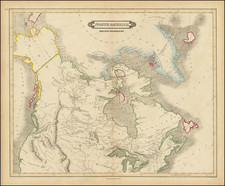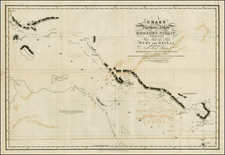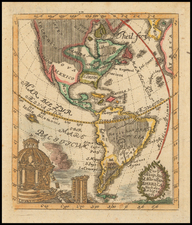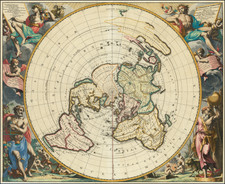Nice example of Ramusio's map of the Western Hemisphere, the earliest obtainable map to accurately depict the Americas.
Ramusio's map is attributed to Giacomo Gastaldi. It is the first map to depict the names derived from the travels of Francisco Vasquez Coronado in the Southwestern US, including Quivira, Sierra Nevadas, Cicuic, Axa, Cucho, Cibola and Tiguas. The reference to Sierra Nevadas derives from Cabrillo's explorations of the California Coastline in 1542.
Wheat noted that Ramusio's map represented a significant advance in the mapping of the American West, calling it "an advance of the first importance." The map reflects the lack of knowledge in the Northern parts of the Hemisphere, but does note the Strait of Magellan and retains the mythical large southern continent. The map also includes an early reference to Florida and depicts its peninsular shape, albeit oddly.
An essential map for early American collections.
The present example is the 1606 edition of the map, with the title on the top left and right of the map and the page numbers 385.2 and 385.3. It can be distinguished from the 1556 edition (title on the left side only) and the 1565 edition (title on top left and right, page numbers are 455 and 456).
Giovanni Battista Ramusio (1485-1557) was an Italian geographer who worked within the Venetian Empire. His father had been a magistrate and he himself served as a civil servant to Venice. He served throughout Europe, allowing him to build up a network of informants and a collection of travel materials. He compiled this information into his enduring masterpiece, Navigationi et Viaggi, in 1550 (first volume) and 1556 (third volume). The second volume appeared after his death in 1559, as the original manuscript had been destroyed by a fire.














![(Arctic Exploration) [Manuscript Map of Ross Expedition to King William Island and Boothia Peninsula with additional reference to George Back's 1833-34 Expedition]](https://storage.googleapis.com/raremaps/img/small/74238.jpg)